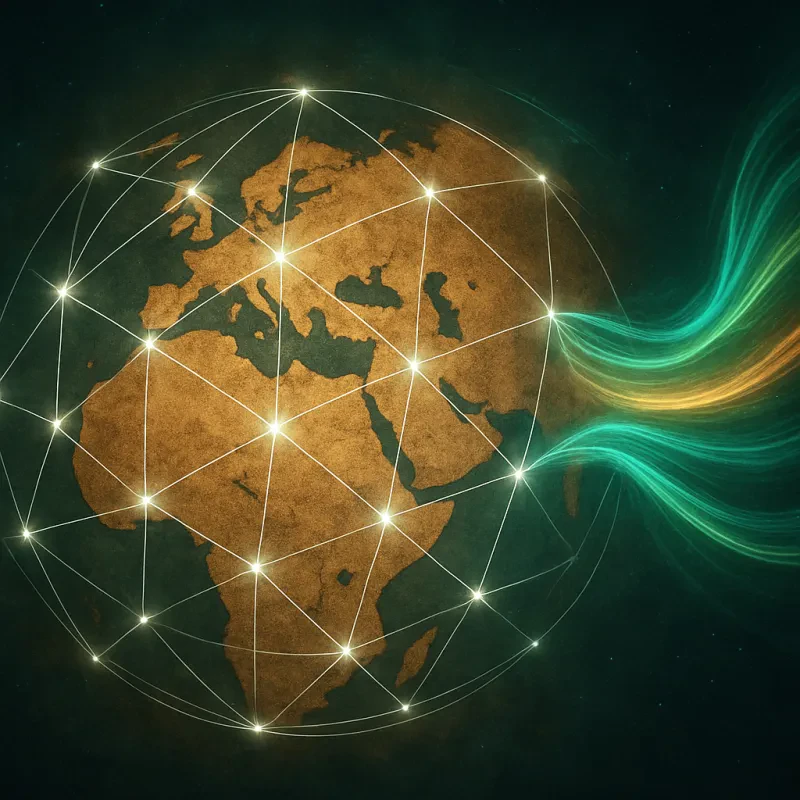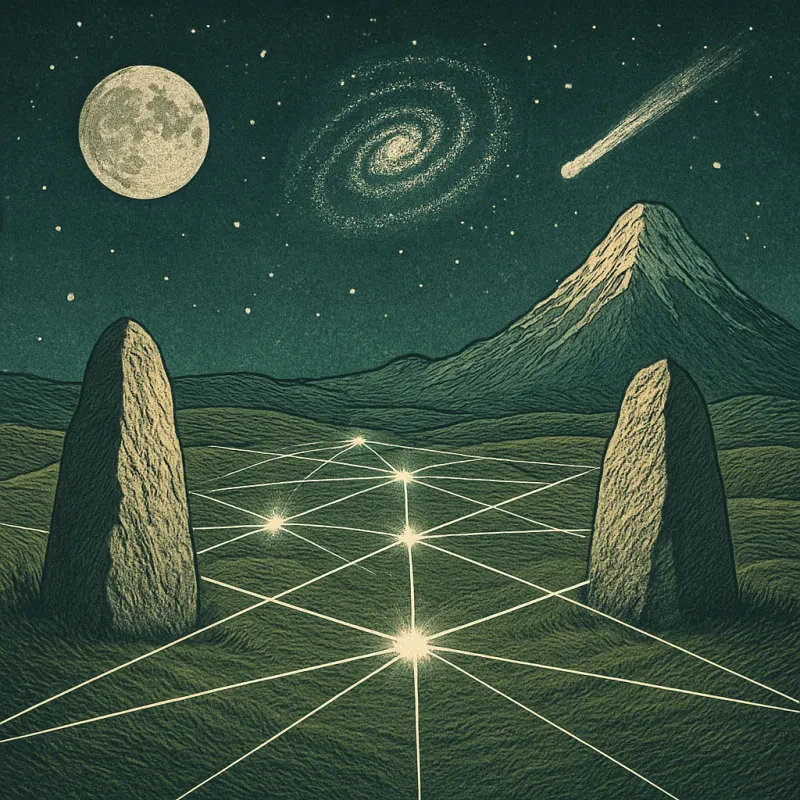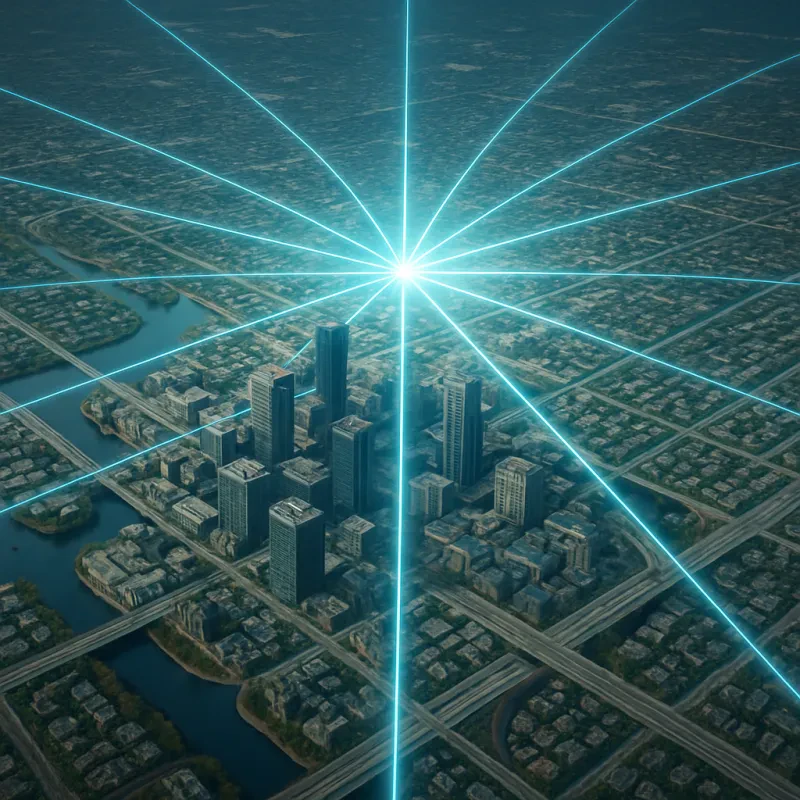Ley lines are fascinating! They’re often described as invisible lines of energy that connect ancient sites across the landscape. Imagine a giant web linking sacred places like stone circles, churches, and even burial mounds. People believe these lines carry spiritual energy, and many enthusiasts feel a strong connection when standing near them.
These straight paths were first popularized in the early 20th century by Alfred Watkins, an English antiquarian. He noticed that various historical landmarks lined up perfectly over long distances. This sparked a wave of interest and led to the idea that there’s more to our landscape than meets the eye. Some folks think these alignments could have been used by ancient cultures for navigation or as a way to harness natural energy.
So, how do you find ley lines? While there's no definitive map, many people use tools like dowsing rods or even pendulums to detect energy flow. Others rely on their intuition as they explore areas known for their mystical significance. Local legends often play a part, leading seekers to spots where they can tap into this ancient energy.
Whether you’re a skeptic or a true believer, exploring ley lines can be an exciting adventure. They encourage us to look at our surroundings with a sense of wonder and curiosity. Plus, visiting these ancient sites can bring a deeper appreciation for the history and culture behind them. So, grab a map, or just take a walk, and see if you can feel the magic for yourself!
The History Behind Ley Lines
Ever heard of ley lines? These are straight alignments between various historic sites, monuments, or geographical features that some believe carry mystical energy. The concept has roots in the work of Alfred Watkins, a British antiquarian, who introduced the idea in the early 20th century. In 1921, he published a book that detailed his thoughts on these energy pathways, suggesting that ancient cultures might have mapped out these lines for navigation or spiritual purposes.
Watkins observed that many ancient sites, like stone circles and barrows, lined up perfectly across the landscape. He proposed that these alignments were intentional and used by our ancestors as a way to connect to each other and the earth. Imagine walking through history, following a path that ancient people might have traveled to honor their beliefs or communicate with each other!
Over the years, ley lines have captured the imagination of many, leading to various interpretations and theories. Some see them as metaphysical channels that carry energy, while others view them as simple coincidences. Many New Age enthusiasts believe these lines are hotspots of spiritual energy where one can tap into the earth's vibrations, providing a unique experience for those who seek it.
In popular culture, ley lines have made appearances in everything from literature to documentaries, reinforcing their allure. They invite curiosity about how ancient people might have perceived their surroundings and emphasized the connections between different sites. Whether you're a skeptic or a believer, exploring ley lines offers a fascinating glimpse into the past and the mysteries that still weave through our landscape today.
How Ley Lines Influence Our World
Ley lines are fascinating! These invisible energies crisscross the Earth, connecting various significant sites. Think about them like a spider's web, where certain intersections can hold unique power or influence. Ancient cultures seemed to pick up on this, aligning their important structures—like temples and stone circles—with these energetic pathways. It’s almost like they had a built-in GPS for the universe!
People believe that ley lines can affect the energy of a place. Some say they enhance meditation, promote healing, or even attract positive vibes. If you've ever visited a historic site, you might have noticed a sense of peace or inspiration. That could be the influence of a ley line, making that spot feel special. Many also think that these lines help facilitate communication between our world and spiritual realms.
There’s a lot of curiosity about how ley lines might work in daily life. Some enthusiasts even create ley line maps, marking these powerful spots. They plan visits to experience the energy firsthand or explore areas where they intersect. It’s all about connecting with the Earth and understanding how these ancient paths influence our surroundings. You might find your next adventure by seeking out one of these mystical energy routes!
Interestingly, ley lines don’t just sit there; they can also symbolize the connections we have with each other and our planet. They remind us of a shared energy and history that might not be visible but definitely exists. So next time you’re traveling, keep an eye out for those historical landmarks. You could be tapping into the energy of a ley line and feeling its effects without even realizing it!
Exploring Ley Lines in Modern Culture
Ley lines have fascinated people for generations, connecting the ancient world with modern beliefs and practices. These invisible alignments of sacred sites, natural landmarks, and other significant locations spark curiosity and intrigue, inviting us to explore our planet's hidden energies.
Today, many folks are diving into ley lines as part of their spiritual journeys. Whether through meditation, dowsing, or simply visiting these famous sites, people are eager to tap into the unique energies believed to flow along these paths. It's not just about the history; it’s about experiencing the present too. You might feel a sense of connection when standing at an ancient stone circle or a sacred temple, as if the earth itself is whispering its secrets to you.
Pop culture has also picked up on the ley line phenomenon. Movies, documentaries, and even books frequently reference these mysterious alignments, often blending them with tales of supernatural happenings or quests for enlightenment. This keeps the conversation going and attracts new enthusiasts who may not have previously considered the significance of these energy lines in our lives.
Some modern communities have also embraced ley lines, using them as a framework for festivals, gatherings, or wellness retreats. These events celebrate the earth, connection, and community, allowing participants to explore both ancient practices and contemporary experiences. Whether you're a skeptic or a believer, these gatherings offer a space to exchange ideas and foster connections, all while enjoying the natural beauty that surrounds us.


